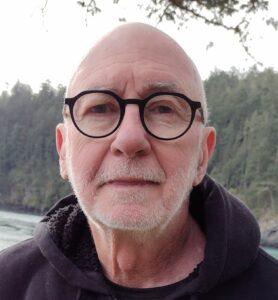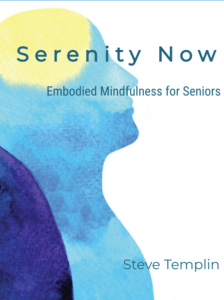Speaking of natural healing, Focusing is the most natural and essential healing process I’ve discovered in my lifelong pursuit of healing and wholeness. Hands down.
So, just what is Focusing?
For me, it’s not really a technique. Although Focusing was discovered at the University of Chicago in the sixties, it’s as natural as two friends engaged in a respectful heart to heart chat over a cup of coffee.
The key ingredient is that these two friends are communicating from the heart, their language reflecting the feelings and sensations they’re experiencing in their bodies, as opposed to just what they’re ‘thinking’ about an issue in their heads. They’re open, honest, vulnerable, and courageous.
This heartfelt coming together and deep sharing between friends helps to restore neurological and biochemical balance that’s ultimately reflected in our emotional well-being and physical health.
Our autonomic nervous system, and particularly our vagus nerve, is what allows this form of relaxed and intimate emotional connection to produce greater emotional and physical well-being.
We are wired for healing, both personally and interpersonally. We’re designed to connect deeply with others and ourselves (the same neurological shifts occur). And in doing so we’re balancing inner biological mechanisms that no medical intervention or complimentary health practice can accomplish alone. Our heart and brain connect for deep healing.
The suggestion here is to use whatever interventions, medical or natural, that are most needed or helpful, but let’s not forget to activate our own factory installed vagus nerve and it’s one of a kind healing potential. If vagus nerve sounds too sciency or medical …. just think ‘heartfelt, honest connection and communication’ with yourself or others.
That’s the magical, alchemical recipe for helping to heal ourselves, loved ones, and possibly even our culture. That transformative potential lives in the wisdom of your body and is just waiting to be engaged. However, in our head-centric culture this notion of vulnerably connecting with the body can seem counter-intuitive, foreign, and threatening.
More About Focusing
In my last post I talked a bit about Focusing and shared a story about a patient’s emotional healing. Here I’ll briefly tell you more about the origins of Focusing.
It’s the work of Eugene Gendlin, Ph.D. of the University of Chicago. In an effort to find what worked best in the counseling realm he recorded hundreds of hours of counseling sessions. He began to notice similarities in the communication styles of those individuals who benefited the most from therapy.
He observed that these more successful individuals appeared in some ways to be less articulate than those who benefited less from therapy. These more successful therapy clients, rather than speaking fluently about their emotional experience, would tend to pause, in a more halting manner, and reference what they were feeling in their bodies while searching for the best fitting words.
It was eventually discovered that while referencing the body and waiting for the best fitting words their brainwaves were becoming more orderly. What a discovery. If you want your brain to work better develop an attentive, curious, and non-judgmental relationship with your body.
A Focusing Guide
It can help to have a guide, even for a process that’s as natural as sharing a cup of coffee with a friend. I’ll share some steps that can help to give you a feel for the process. Eventually you can most likely forget the steps as you’re naturally and more intimately aware of your body.
I’ll share the guide that was developed by my mentors at the BioSpiritual Institute.
Some Important Concepts
- My body knows things as well as my head.
- How does my body know things? Through, feelings, body sensations and things I know but can’t yet put into words. We call these “felt senses”.
- Therefore, my body has its own language through which it wants to talk to me. There is always a story waiting to be told in my body whenever I notice feelings, sensations, and “felt senses”.
- How do I let my body tell its stories? By learning a special way of caring for, holding, and listening to my body’s language.
- This special way of owning my bodily experience is called “Focusing”.
Focusing Steps
- 1. Ask yourself, “What inside me, feels like it most needs to be listened to right now?” Take time to notice what that is. Notice where you feel it and how it feels in your body.
- 2. Then ask yourself, “Is it O.K. to be with it right now?” If the answer is “no”, ask, “ Can I be with how saying “no” feels?” If not, ask “What can I be with right now?”.
- 3. If the issue is one that doesn’t feel good, sense whether you can give it some caring presence while you notice how it feels.
- 4. Next, ask yourself, “Can I let myself feel the whole thing in an open, gentle way, waiting for something to come…a word, a feeling, an image, a memory…that fits with the way it feels? If the answer is “no”, ask if it is O.K. to be with the feeling of not wanting to be with it.
- 5. If something comes…words, images, feelings, memories…notice how this feels in your body (don’t just try to figure it out in your head). If it’s O.K. to continue, stay with the body feel of whatever comes, along with an attitude of caring presence …. allowing your inner story to unfold until it feels right to stop.
- 6. If nothing comes, or if you have to stop before finishing, always promise this unfinished place that you will come back to listen again.
- 7. If something has unfolded, take time to notice the difference in how it feels now as compared with how it felt when you started. Allow time to notice and savor the body feel of that change.
These steps can be very helpful when learning the process, while at the same time they can seem complicated and daunting. Please take a look at how effortlessly and naturally this process can unfold in the patient’s story I shared in the previous post.
Focusing for me is the foundation level skill when it comes to self-healing or when helping someone else heal.
And any other healing modality that you’re comfortable with can be added to your newly honed intimate awareness of your body. You can hold or tap acupuncture points, chant, tone, use crystals or magnets, or one of my favorite high-tech healing methods …. going for a walk in the woods.
All of this is really about learning how to come out of our heads and live in a more connected and embodied way.


 Steve is a retired Doctor of Oriental Medicine, Acupuncture Physician, and HeartMath Trauma-Sensitive Certified Practitioner with over 35 years of clinical experience in the fields of Energy Medicine, Energy Psychology, and Biofeedback.
Steve is a retired Doctor of Oriental Medicine, Acupuncture Physician, and HeartMath Trauma-Sensitive Certified Practitioner with over 35 years of clinical experience in the fields of Energy Medicine, Energy Psychology, and Biofeedback. 